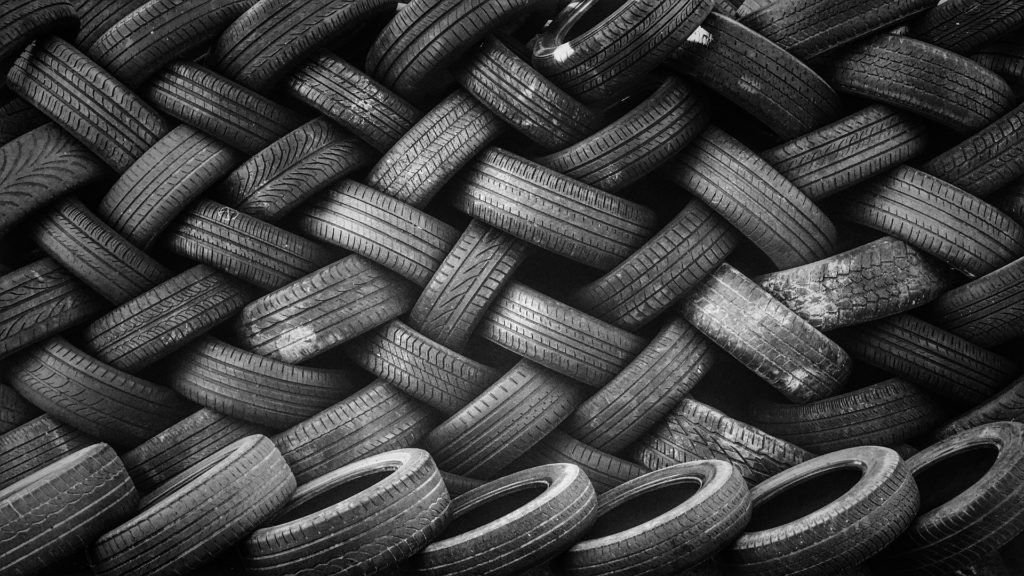
An illegal tire dump know by many is finally being cleaned up by the state. The lot has been used since early last year and is clearly visible.
A service road wedged between Interstate 510 and a gated subdivision in New Orleans East was transformed into a crude — and very illegal — dumping site for thousands of tires early last year. Situated just off Lake Forest Boulevard, the two-lane road is impassable, blocked not only by concrete barricades but a nearly quarter-mile stretch of tires ranging in size and thickness, piled on top of one another, collecting water and providing a massive breeding ground for mosquitos and other carriers of disease. “The Eastover site appears to be one of the largest tire-dumping sites to be encountered in the city of New Orleans,” said John Lawson, a City Hall spokesperson. It may not be an eyesore much longer. Nearly a year after city officials notified the state, the Louisiana Department of Transportation and Development said cleanup is finally set to begin on the state road on Friday morning — much to the relief of nearby residents.
nola.com
This is not the only one but the biggest. This is a common problem.
But the Eastover site is far from the only impromptu dump in New Orleans. Lawson said the city receives new reports of dumping daily and the Department of Sanitation removed over 33,000 waste tires from public right-of-ways last year. In 2018, the city removed nearly 50,000 tires dumped improperly. Lightly populated sections of New Orleans East have long been a favored target of dumpers. The illicit practice isn’t limited to New Orleans, of course: Illegal tire-dumping occurs statewide, and it has for decades, said environmental scientist Dutch Donlon. “The problem began to manifest itself back in the late ’80s. The state had literally millions of tires dumped all over the place,” said Donlon, who works for the state Department of Environmental Quality.
The main problem is there is not much use for a used tire. I can vaguely remember years ago there was though of using them for roads or some other use.
The problem is there is little market for used tires, and it can be costly to dispose of them legally. At its peak in the 1980s, the DEQ estimated there were more than 40 million waste tires scattered across hundreds of unpermitted dumps. Placed in landfills — or abandoned vacant lots — tires refuse to break down, stubbornly holding their form for decades. In 1989, the state finally started regulating how tires were processed, requiring them to be recycled and chipped and encouraging processors to keep the material out of landfills. One illegal dump in Jefferson Parish held as many as 800,000 waste tires. The flurry of regulation and the cost of the massive effort to clean up the state led to the $2.25 environmental fee that is tacked onto the price of every tire purchased in Louisiana. That money, sent to the Waste Tire Management Fund, subsidizes companies that process and transport waste tires and and incentivizes recycling plants to find “beneficial uses” for the chipped tire material, Donlon said. Those can range from use in civil engineering projects, such as stabilizing hillsides or filling in pits to burning scrap tire for fuel. Bits of tire can also be used for playgrounds or sports complexes. Last year, the state’s five tire processors chipped nearly 145 million pounds of tire material.
Clean up requires a lot of money.
Between 1992 and 2000, the department spent millions of dollars from the fund to partner with localities on cleaning up dump sites. The fee generates about $12 million annually, but most of that goes toward paying processors and covering the program’s operating costs, leaving little to help municipalities collect and haul away tires from sites like the one in New Orleans East. Instead, Lawson said the money comes out of local coffers. The Department of Transportation and Development also pays for its own clean-ups, removing an average of 50,000 cubic yards of debris and litter from state roads each year.
If caught littering, there is a fine. But you have to be caught.
People caught simply littering can face a maximum fine of $3,000 plus community service, but illegal dumping can carry harsher penalties, including jail time. But enforcement is difficult, DEQ spokesman Greg Langley said. “It is a never-ending task, as more and more waste tires appear on abandoned or neglected properties all across Louisiana,” he said. “One of the best sources is an eyewitness, someone who knows that it’s their Louisiana these scofflaws are trashing and who wants to do something about it.” Over time, the department has partnered with cities, including New Orleans, to enhance surveillance and help pay overtime for employees who clean up “promiscuously dumped” tires, Langley said. Given the challenges in finding suspects, Donlon said he doubts any meaningful reduction in dumping will occur unless the market for tire material in Louisiana is expanded. “You’re gonna have to figure out what we can do to make them valuable enough to where someone won’t pay money just to go dump them,” he said. Though there are a number of options, none have taken off in Louisiana. For example, burning tires to power industrial boilers is an idea that once had promise, but natural gas today is far cheaper. Some states to the north have embraced “rubberized asphalt,” or asphalt mixed with tire material, to pave roads. When the state first turned to breaking down whole tires, a 7.4-mile stretch in West Feliciana Parish was the first in the state to be paved with rubberized asphalt. That project used 34,000 tires in 1992. But the practice never took off. The rubber adds elasticity and extends the life of the project, but is also more expensive than regular gravel, Donlon said. “It’s when what you can make out of them can compete with other material that’s being used right now,” he said.
So, the inventors out there, come up with a sure-bang way to use tires and the problem is solved!



